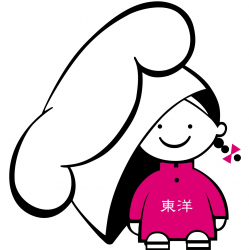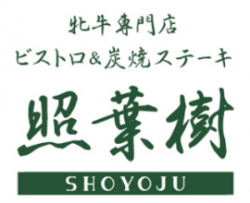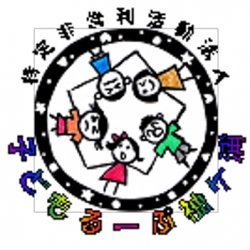Info Type
View Option
Sort by Category
This text has been translated by auto-translation. There may be a slight difference between the original text and the translation. (Original Language: 日本語)
Notification
Yomeir" child-rearing wisdom mail
- [Registrant]四街道市
- [Language]日本語
- [Location]千葉県 四街道市
- Posted : 2024/12/09
- Published : 2024/12/09
- Changed : 2024/12/09
- Total View : 4 persons
- Find local business with Town Guide
-
- Established in 1975. Chinese Cuisine Toy...

-
Chinese Cuisine Toyo, a long-established Chinese restaurant established in 1975, offers the very popular "Earthen Pot Marbo-Doufu" at both locations in Kamogawa ・ and Kisarazu. You will surely fall in...
(04) 7093-2345中国料理 東洋 鴨川店
-
- We are a painting company with no salesm...

-
Why don't you paint your whole house ・ at a reasonable price ? We offer low prices because we are a company of craftsmen only. ●Total floor space 30sqm ・ 10 year warranty ●Paint locations Roof ・ ...
(043) 234-2770有限会社 篠橋塗装コーポレーション
-
- Why don't you come into contact with nat...

-
Don't you feel "warmth" when you take a nap ? At Nappu Sodegaura Office, we value the interaction with people and people who feel warmth as if they are taking a nap. You can work peacefully while inte...
就労支援B型 なっぷ袖ケ浦事業所
-
- We serve carefully selected Kazusa Wagyu...

-
Our steaks are made from Kazusa Wagyu ・ Iwami Wagyu ・ Sanda Beef, seasoned with salt and pepper only, and carefully grilled over an open flame of Kishu-binchotan charcoal. Kazusa Charcoal Grilled St...
(0438) 97-7900ビストロ&炭焼ステーキ 照葉樹
-
- Isegen, a kimono store with a wide selec...

-
Kimitsu City drapery store "Isegen" offers made-to-order futon remodeling services. We will remake your favorite futon so that you can use it for a long time. In addition, we have a wide variety of ot...
(0439) 27-2006いせげん呉服店
-
- Not only the standard deer and wild boar...

-
A drive-in that sells mainly gibier products, which I believe is the first of its kind in Japan🐗🅿Many products are rarely seen anywhere else ! You can buy for yourself or as a souvenir ! I recommend b...
(0439) 27-1337猟師工房ドライブイン
-
- Wisteria flowers are beautiful and sure ...

-
la glycine" opened in Senjodai as a sister store of Kadoh Ichihara branch, which is famous for its handmade warabimochi. The menu includes a wide variety of dishes such as curry, rice balls, etc., whi...
(043) 497-6635la glycine ラ・グリシーヌ
-
- The restaurant's original cuisine, which...

-
It is also available for banquets and group travel meals. ・ ・ Whether you are a tourist or a local, please spend your time in a relaxed atmosphere with "seasonal cuisine in a casual "enjoyable...
(0439) 57-7011和食処 季楽里
-
-
(04) 7093-6669シーブルー鴨川店
-
-
- We are Myosho-ji, a small temple located...

-
Myosho-ji Temple, where you can view the ocean We hold various events every season ✨ Many companies cooperate with our events and open stalls to make the events even more exciting ! We also have work...
日蓮宗 栄長山 妙昌寺
-
- Kisarazu ・ Kimitsu ・ "Shoin Juku," popul...

-
Juku Navi - "No.1" Gakushu-juku Review Ranking "No.1" Independent Study Guidance Shoin Juku You can learn 5 subjects, unlimited attendance, and learn until you understand 100% ! Since its establish...
(0439) 27-0263松陰塾 君津南子安校
-
- Culture Kimitsu, located in Kimitsu City...

-
Culture Kimitsu is a bright and spacious culture center that offers a wide variety of courses to meet the needs of beginners, young children, and middle-aged people. We offer a wide range of courses, ...
(0439) 50-9570カルチャー君津
-
- Directly managed by Sunrise Kujukuri, "H...

-
× We offer a wide variety of menu items made from fresh seafood, mainly from Chiba Prefecture, cultivated at Umi no Eki Kujukuri (Sea Station Kujukuri). Our most popular dish, the Habusuri Set Meal, ...
(080) 7102-8069葉武里tassoの森の駅店
-
- Anata Shoten OPEN in Kimitsu City ! Soft...

-
Anata Holdings aims to contribute to people and society as a group by bringing together the individuality of the employees of the constituent companies while making the most of it. What is good for ...
(0120) 910-827株式会社 穴太ホールディングス
-
- Kodomo Loop Sodegaura aims to create a p...

-
Kodomo Loop Sodegaura aims to create a community where children and adults in Sodegaura City and its suburbs can grow up together in a rich environment by creating a place where children of different ...
(0438) 63-2850NPO法人 子どもるーぷ袖ケ浦

Childcare Wisdom Bag No. 9
Email Delivery Service from Central Childcare Center
[Food Culture in Japan In Japan, there are four seasons, and there has been a custom of eating special dishes for seasonal events and celebrations since ancient times. This month, we would like to tell you about one of Japanese food culture, "Event Food".
★ ... ★ ... ★ ... ★ ... ★ ... ★ ... ★ ... ★ ... ★ ... ★ ... ★ ... ★
This e-newsletter provides monthly information about food, health, play, seasonal events, and childcare to help families.
= = = = = = = = = = = = = = = =
One Point Advice
= = = = = = = = = = = = = =
During December and January, there are a series of events: the winter solstice, New Year's Eve, and New Year's Day. The dishes eaten during these events are meant to celebrate and wish for the happiness and health of the family.
[Winter Solstice]
The winter solstice is the time of year when the daylight hours are shortest and the weather is cold, making it easy to catch a cold. Therefore, we warm ourselves by taking a yuzu bath, which is believed to ward off evil spirits, and eat pumpkin, which can be stored for a long time and is rich in vitamins and minerals, to prevent colds.
[New Year's Eve Soba Noodles]
This dish is as thin and long as soba (buckwheat), a good luck charm to wish for longevity and happiness for a long time. It also means to break off misfortune. It can be served with shrimps, chicken or vegetables for a good nutritional balance.
[Osechi ryori]
Originally, Osechi ryori was served on the first day of the year ( January 7 ), the first snake ( March 3 ), the Dragon Boat ( May 5 ), Tanabata ( July 7 ), Chou-you
When welcoming the New Year's gods, people refrain from boiling and cooking food, and the dishes are designed to taste good even when cold so that the cook can take a rest during the New Year's holiday.
Each Osechi dish has its own meaning.
●Kuromame (black soybeans) : Wishing for a healthy and prosperous life
●Tazukuri (rice seasoning) : A good harvest
●Suzuko (baby sardines) : Prosperity of offspring
●Kinton (sweet potatoes) : Wishing for good fortune
【Ozoni】
Ingredients, soup stock, and the shape of mochi (rice cakes) vary from region to region. Ingredients are often local products, and many ingredients are used for good luck.
Depending on the region, there are various ways of eating mochi, such as square or round rice cakes, clear soup, miso soup, and azuki bean soup. ?
★ Osechi dishes to enjoy with children ★
◎Kinton with sweet potato and apple ◎
2 sweet potatoes ( about 200g
3 tablespoons sugar 3 tablespoons salt pinch
◎How to make
1 Peel and cut sweet potatoes into round slices. Cut the apples into 5mm pieces, wrap in plastic wrap and microwave in 600w for 1 ~ 2 minutes until wilted.
2 Put sweet potatoes in a pan and add enough water to cover the sweet potatoes.
3 When the sweet potatoes become a little soft, add sugar and salt.
4 When the sweet potatoes are soft and the cooking liquid has reduced, take out the sweet potatoes, mash them well, and mix them with the apples.
*It is easier to eat in your hand if you wrap it in plastic wrap and make it into chakinshime. *=*=*=*=*=*=*=*=*=*=*=*=*=*=*=*=*
[Register ・ Address for change]
e-yomail@xpressmail.jp
[Cancel address]
e- yomail-d@xpressmail.jp